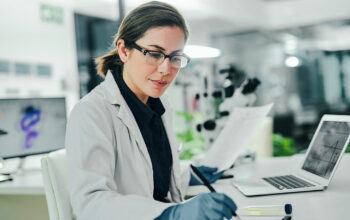Accelerating the development and delivery of new innovations for a TB-free world
Before the World Economic Forum, Davos’ first claim to fame was as a haven for wealthy tuberculosis sufferers in the 1800s and 1900s: the rarefied air of the Magic Mountain, as Thomas Mann dubbed it, offered a “certain” cure. The Davos visitors of those days, like Mann’s Hans Castorp, were a small minority of TB sufferers. Today, as then, TB is a disease linked to poverty. As we mark World TB day, we are reluctantly forced to acknowledge that TB is still ravaging the lives of predominantly poor people. With an estimated 10.4 million new cases and 1.7[1] million fatalities every year, it is the main cause of human death due to an infectious disease in the world.
The long search for effective treatments and cures required substantial funding in those days and it still does. Despite the best efforts of scientists, charities, governments and concerned individuals, it was not until the 1940s that researchers found a cure for tuberculosis[2]. Today, tuberculosis is curable, but its long treatment regimen is demanding, often unfortunately proving challenging for patients to complete their full course. This accounts in part to today’s continued death toll, as does lack of diagnosis, weak health systems and lack of access to medicines. It also accounts for the rise of multidrug-resistant or extensively drug-resistant TB (MDR-TB and XDR-TB).
What’s more, TB microbes are very inventive. So, continuous innovation is crucial to the fight against the disease. It requires incentives and political will to encourage innovation. There are now over 60 R&D projects for TB medicines and vaccines in the pipeline[3], including seven products in phase III clinical trials. These new products are reaching the final stages of the 10-15-year R&D process – one in which many other possible treatments or vaccines have fallen by the wayside.
The biopharmaceutical industry recognises collaboration in R&D can be instrumental in addressing the most pressing of global health challenges. Companies are therefore partnering with over 30 collaborators (universities, research institutes, product development partnerships (PDPs), etc.) to develop innovative medicines and vaccines for TB and MDR-TB. After a gap of 50 years, major breakthroughs by Johnson & Johnson and Otsuka have seen the light of the day: two new medicines (bedaquiline[4] and delamanid[5]) have been approved for the treatment of MDR-TB under programmatic conditions in numerous countries, with both added to the World Health Organization’s Essential Medicines List. A priority is getting these new treatments to patients by broadening sustainable and responsible access.
Both Johnson & Johnson and Otsuka collaborate with a variety of local, national and global partners to expand access to treatment, diagnostics and care. They introduced responsible, innovative and clearly structured approaches to expand dissemination of their new treatments while ensuring safe and appropriate use. This is an integral aspect of the introduction of new TB regimens to ensure that they remain effective for patients today as well as tomorrow. This is why their programs also include providing healthcare professionals training and appropriate pharmacovigilance and surveillance activities to monitor resistance.
Pharmaceutical companies are involved in over 30 partnerships to increase access to TB treatment, diagnosis and care, with. These programs include donations, but also manufacturing partnerships to increase local capacity. Companies are working with the Global Drug Facility[6], a unique TB-specific mechanism for pooling the procurement of medicines and diagnostics. Some initiatives also focus on reaching isolated groups with TB diagnostics through door-to-door screenings and training of health workers. Companies work with health providers to prevent medicine stock-outs in rural health centres and ensure the quality of tuberculosis medicines in pharmacies across the world with mobile labs[7].
Today, politicians, NGOs, health experts, patients and business all agree that we need renewed commitment to make TB history. That’s why they are gearing up toward the first ever UN High-Level Meeting on TB to take place on 26 September. The biopharmaceutical industry, working to bring effective therapies and access solutions to the table, is fully committed to that goal. Our aim is that the great and the good at Davos will soon be able to celebrate how governments, the World Health Organization, the global health community, and the biopharmaceutical industry, all worked together to relegate the reality of 1.8 million dying each year of TB to the history books.
[1] http://www.who.int/mediacentre/factsheets/fs104/en/
[2] http://exhibits.hsl.virginia.edu/breath/desperate-search/
[3] R&D Pipeline for Tuberculosis (IFPMA) (March 2017).
[4] Also known as SIRTURO®
[5] Also known as Deltyba™
[6] The Global Drug Facility is the largest procurer of quality-assured TB medicines and provides TB drug management technical assistance in an effort to promote equitable access to TB medicines and diagnostics.
[7] More information on IFPMA Health Partnerships Directory
Author






